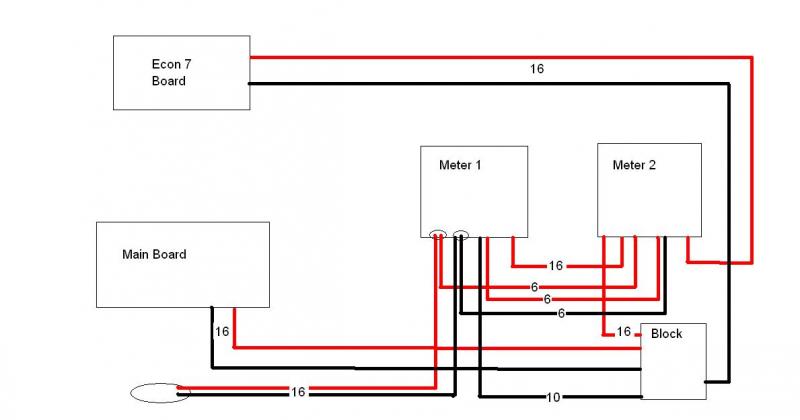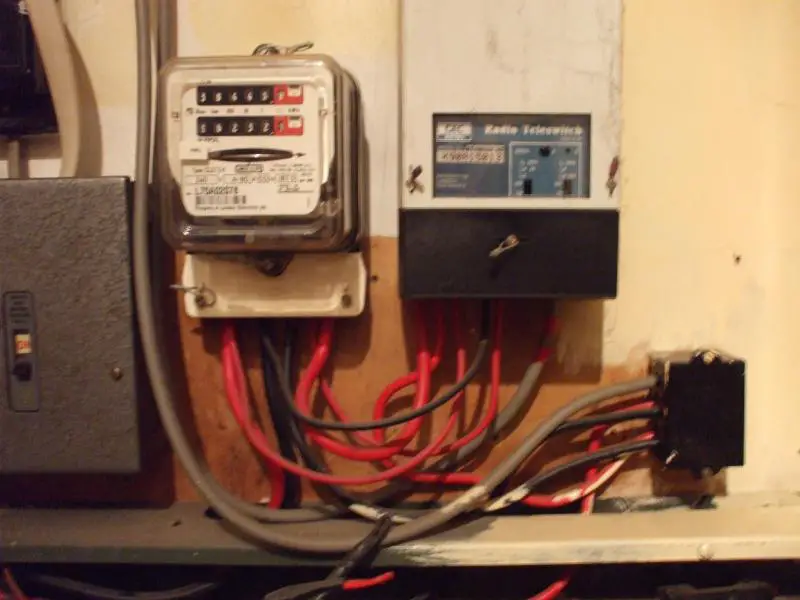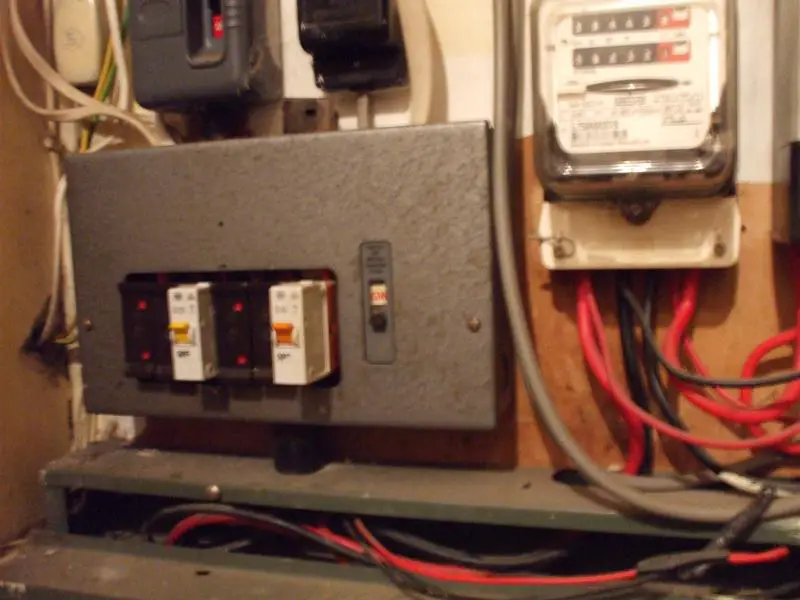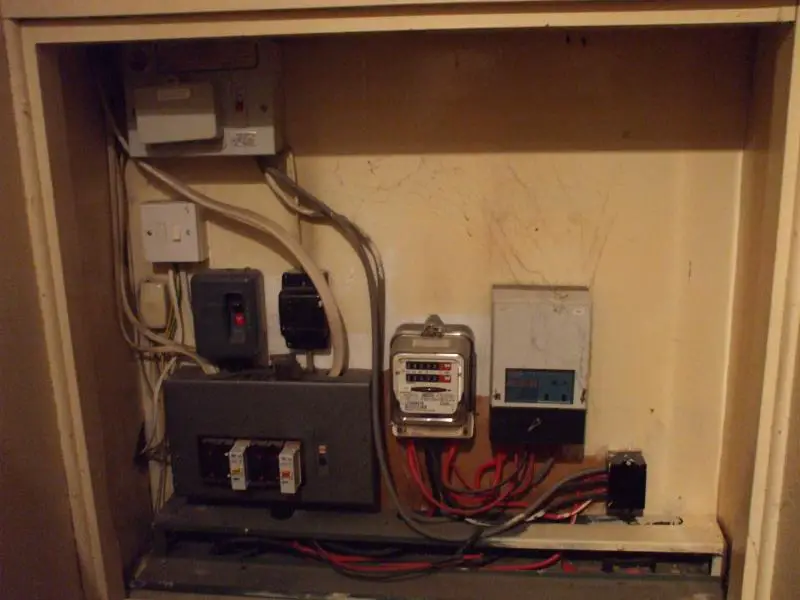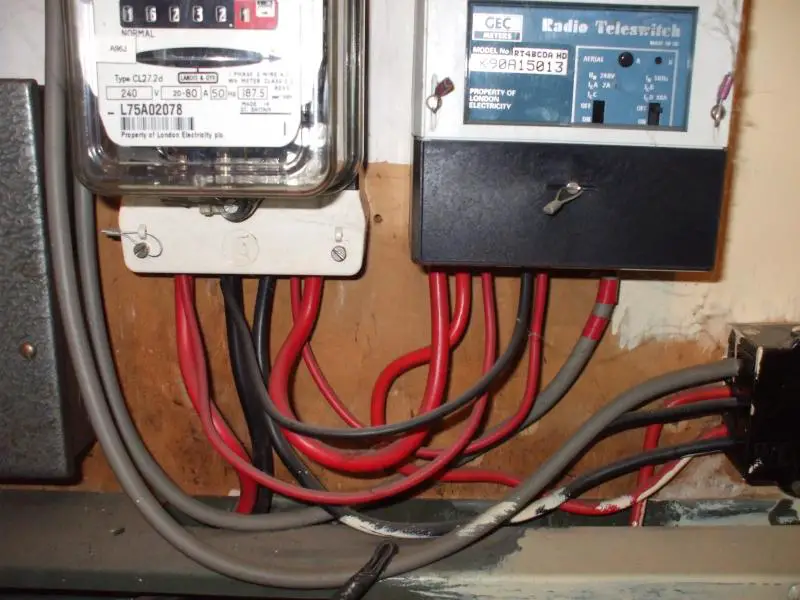Hello everyone, whilst new as a contributor I do read this forum all the time and do understand the basics of electrics.
I have just purchased a new ground floor flat which has storage heaters and (I assume) Economy 7. I want to get rid of these but thats another story. As a matter of interest I have been trying to understand what all the cables mean in my meter cupboard (Diagram enclosed) I understand the block but what puzzles me is the link between the 2 meters, why are there so many and what do they do, could anyone enlighten me in laymans terms please. The sizes of the cables aren't necessarily accurate but represent the differences between each other.
Also, this is a purpose built block of flats circa 1960. There is no main fuse so I am guessing this is in a centralised cupboard somewhere, but I can't see any Main Earth coming into the fuseboard. I have taken off the front of the board but still can't see any incoming earth.
One last thing (sorry!) having checked a few switches and ceiling roses, there is no earth on the lighting. I guess this is a rewire job, but with concrete ceilings how is this possible as I don't relish trunking all over the ceiling?
Thanks in anticipation.
Peter
[/img]
I have just purchased a new ground floor flat which has storage heaters and (I assume) Economy 7. I want to get rid of these but thats another story. As a matter of interest I have been trying to understand what all the cables mean in my meter cupboard (Diagram enclosed) I understand the block but what puzzles me is the link between the 2 meters, why are there so many and what do they do, could anyone enlighten me in laymans terms please. The sizes of the cables aren't necessarily accurate but represent the differences between each other.
Also, this is a purpose built block of flats circa 1960. There is no main fuse so I am guessing this is in a centralised cupboard somewhere, but I can't see any Main Earth coming into the fuseboard. I have taken off the front of the board but still can't see any incoming earth.
One last thing (sorry!) having checked a few switches and ceiling roses, there is no earth on the lighting. I guess this is a rewire job, but with concrete ceilings how is this possible as I don't relish trunking all over the ceiling?
Thanks in anticipation.
Peter
[/img]


